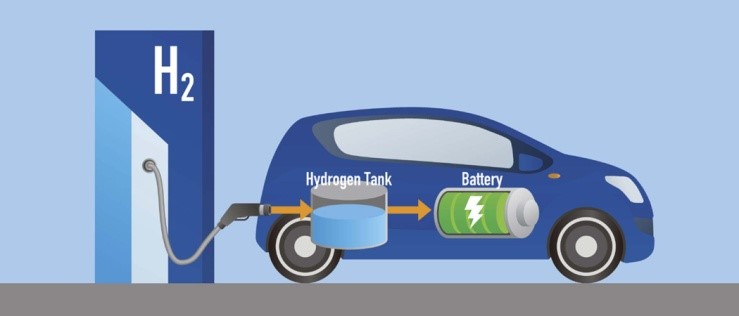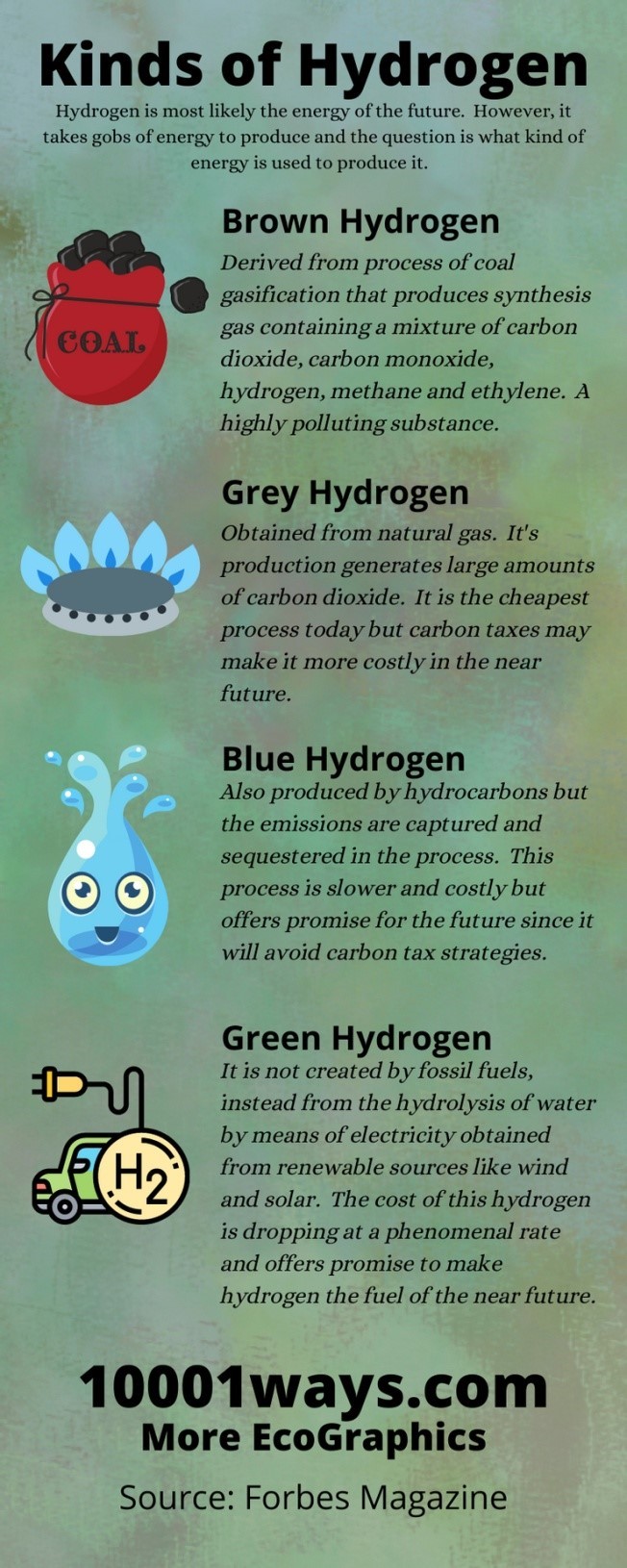India’s Hydrogen Policy

Disclaimer: No Copyright infringement intended.
Context
- Indian Railways' green fuel vertical Indian Railways Organisation of Alternate Fuel (IROAF) has launched bids for the development of hydrogen fuel cell-based train on Indian Railways network.
- This project is expected to promote the concept of hydrogen mobility in India.
How Does Hydrogen Fuel Help?
- Hydrogen is the fuel of stars and packs awesome energy. It is also the most abundant element in the universe.
- But on Earth it is found in complex molecules such as water or hydrocarbons.
- The by-product the burning of hydrogen produces is water.
- The World Energy Council (WEC) says that “combusting one kilo of hydrogen releases three times more energy than a kilo of gasoline and produces only water".
- Then, there are hydrogen fuel cells, which is “an electrochemical cell that converts the chemical energy of hydrogen and oxygen into electricity", whose waste product, again, is water.
- Fuel cells can produce electricity continuously for as long as hydrogen and oxygen are supplied.
- Whether it’s used in a fuel cell or burned to create heat, wherever hydrogen replaces fossil fuels, it slows global warming.
- The added advantage of hydrogen is that, apart from transportation, it can be a “decarbonising agent" for industries like chemicals, iron, steel, fertiliser and refining, transport, heat and power.
The case for green hydrogen
- Green hydrogen has specific advantages.
- One, it is a clean burning molecule, which can decarbonise a range of sectors including iron and steel, chemicals, and transportation.
- Two, renewable energy that cannot be storedor used by the grid can be channelized to produce hydrogen.
- India’s electricity grid is predominantly coal-basedand will continue to be so, thus negating collateral benefits from a large-scale EV push — as coal will have to be burnt to generate the electricity that will power these vehicles.
- In several countries that have gone in for an EV push, much of the electricity is generated from renewables — in Norway for example, it is 99 percent from hydroelectric power.
- Experts believe hydrogen vehicles can be especially effective in long-haul trucking and other hard-to-electrify sectorssuch as shipping and long-haul air travel.
- Using heavy batteries in these applications would be counterproductive, especially for countries such as India, where the electricity grid is predominantly coal-fired.

India’s efforts in this field
- India has announced a National Hydrogen Mission its 75th Independence Day.
- The aim is to make the country a global hub for the production and export of green hydrogen.
- The potential of hydrogen as as a game changer in the energy arena has long been known — its versatility allows it to be utilised in transportation, power generation and industry — and increasing concerns around climate change are driving efforts by countries to quickly induct it into their energy mix to achieve the target of becoming a low-carbon economy.
Green hydrogen Status
- Less than 1% of hydrogen produced in the world is green hydrogen.
- India consumes about six million tonnes of hydrogen every year. This could increase to 28 million tonnes by 2050.
- India has favorable geographic location and abundance of sunlight and wind for the production of green hydrogen.
- India will become a net exporter of green hydrogen by 2030 due to its cheap renewable energy tariffs, according to the Global Hydrogen Council.
- Green hydrogen currently costs or Rs 371-446, which is nearly triple the cost of grey hydrogen.
- The price will decrease further as production and sales increase.
Challenges
- The problem of critical mass:
- Despite its promise, hydrogen technology is yet to be scaled up. Tesla CEO Elon Musk has called fuel cell technology“mind- bogglingly stupid”.
- A big barrier to the adoption of hydrogen fuel cell vehicles has been a lack of fueling station infrastructure— fuel cell cars refuel in a similar way to conventional cars, but can’t use the same station.
- Safety is seen as a concern. Hydrogen is pressurised and stored in a cryogenic tank, from there it is fed to a lower-pressure celland put through an electro-chemical reaction to generate electricity.
What can be done to build a global-scale green hydrogen industry?
- Launch an incentive programme for the production of electrolysers.
- Implementing complementary solutions that create virtuous cycles for ex. building the hydrogen infrastructure for refueling, heating and generating electricity at airports.
- Optimising distribution networks to decarbonise the gas grid.
Final Thoughts
- Under the Paris Climate Agreement, India pledged to reduce the emission intensity of its economy by 33-35 per cent from 2005 levels by 2030.
- Our ability to produce large quantities of green hydrogen will play a major role in providing an alternative to fossil fuels as we transition to low emissions and work towards a clean, healthy environment.
- Through the use of green hydrogen, we can foresee a sustainable future in handling increased demand of clean energy.
- Scaling up the technology and achieving critical mass remains the big challenge.
- More vehicles on the road and more supporting infrastructure can lower costs.
- India’s proposed mission is seen as a step in that direction.



1.png)
